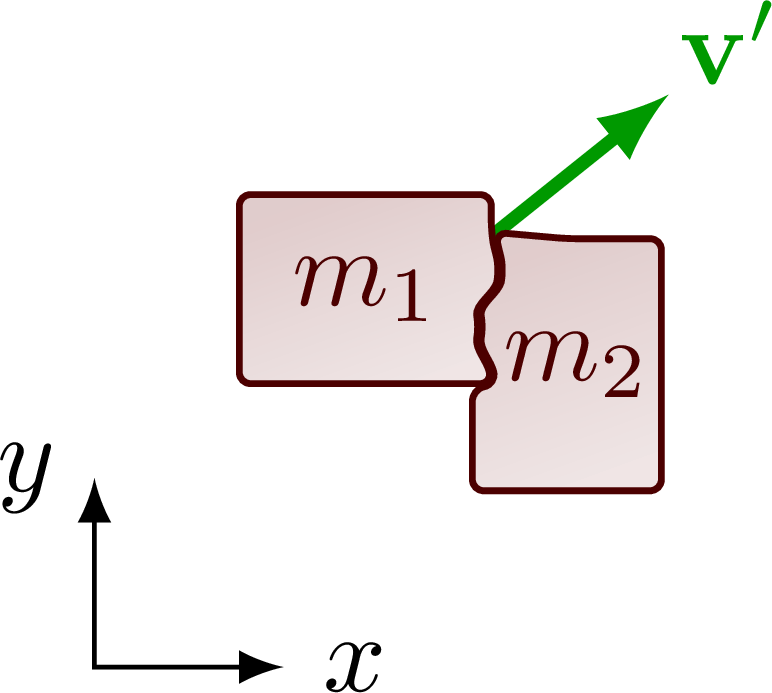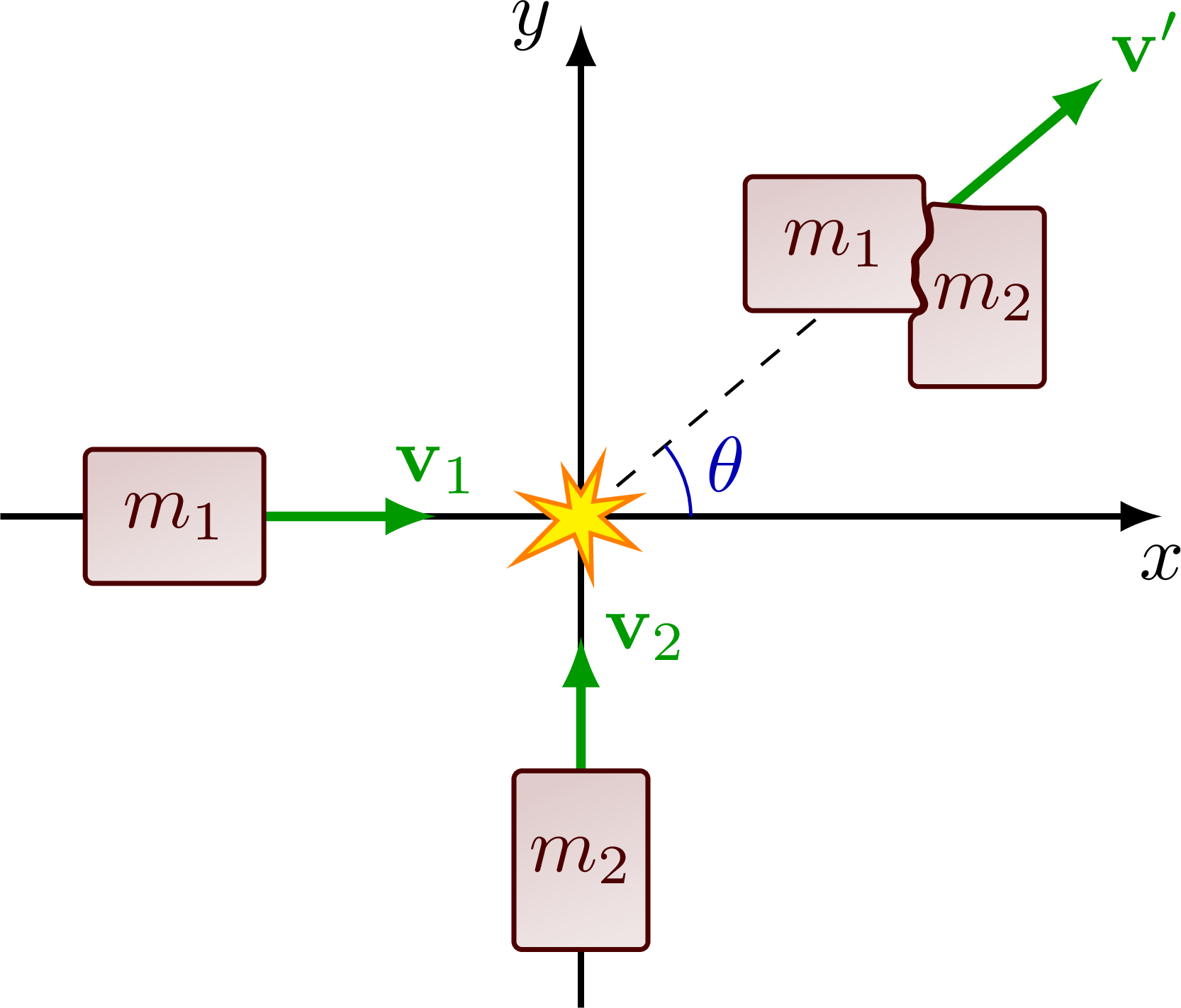Colliding masses to illustrate conservation of momentum.
Edit and compile if you like:
% Author: Izaak Neutelings (October 2020)% Inspiration: https://tex.stackexchange.com/questions/25531/adding-underbrace-in-tikz\documentclass[border=3pt,tikz]{standalone}\usepackage{physics}\usepackage{siunitx}\usepackage{tikz}\usetikzlibrary{calc}\usetikzlibrary{angles,quotes} % for pic\usetikzlibrary{patterns}\tikzset{>=latex} % for LaTeX arrow head\colorlet{xcol}{blue!70!black}\colorlet{vcol}{green!60!black}\colorlet{myred}{red!65!black}\colorlet{acol}{red!50!blue!80!black!80}\tikzstyle{mass}=[line width=0.6,red!30!black,fill=red!40!black!10,rounded corners=1,top color=red!40!black!20,bottom color=red!40!black!10,shading angle=20]\tikzstyle{ground}=[preaction={fill,top color=blue!50!black!10,bottom color=blue!50!black!5,shading angle=20},fill,pattern color=blue!20!black,pattern=north east lines,draw=none,minimum width=0.3,minimum height=0.6]\tikzstyle{velocity}=[->,vcol,very thick,line cap=round]\tikzset{pics/collision/.style={code={\draw[line width=0.5*#1,orange,fill=yellow](0:0.20*#1) -- (30:0.06*#1) -- (50:0.25*#1) -- (80:0.10*#1) -- (105:0.32*#1) --(140:0.08*#1) -- (170:0.25*#1) -- (190:0.08*#1) -- (220:0.25*#1) --(250:0.08*#1) -- (270:0.24*#1) -- (300:0.08*#1) -- (320:0.25*#1) -- (340:0.09*#1) -- cycle;}},pics/collision/.default=1,}\begin{document}% COLLISION 1D before\def\w{0.8} % mass width\def\h{0.5} % mass height\def\v{0.7} % mass velocity\def\L{4.6} % length
Click to download: dynamics_collision.tex • dynamics_collision.pdf
Open in Overleaf: dynamics_collision.tex







